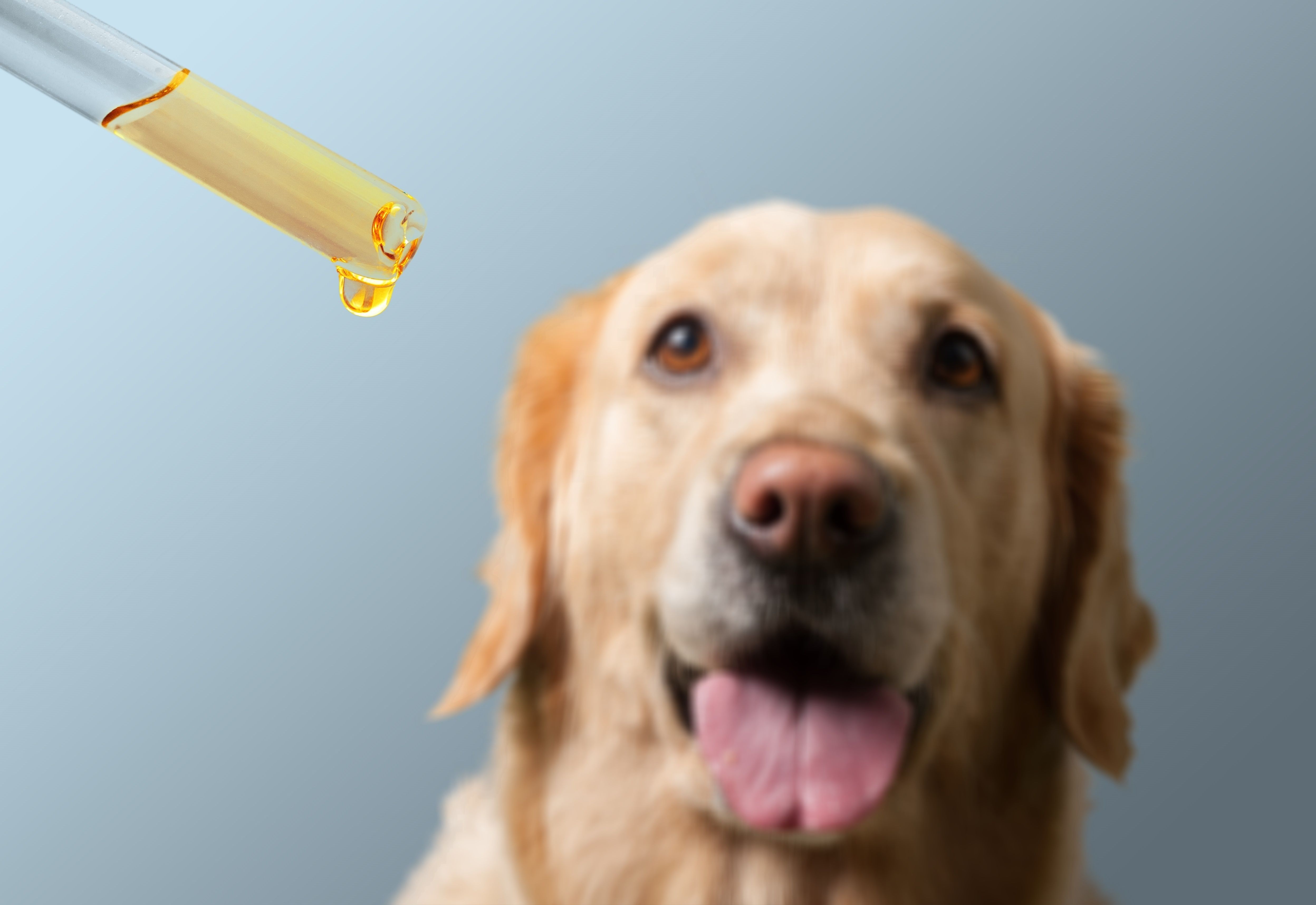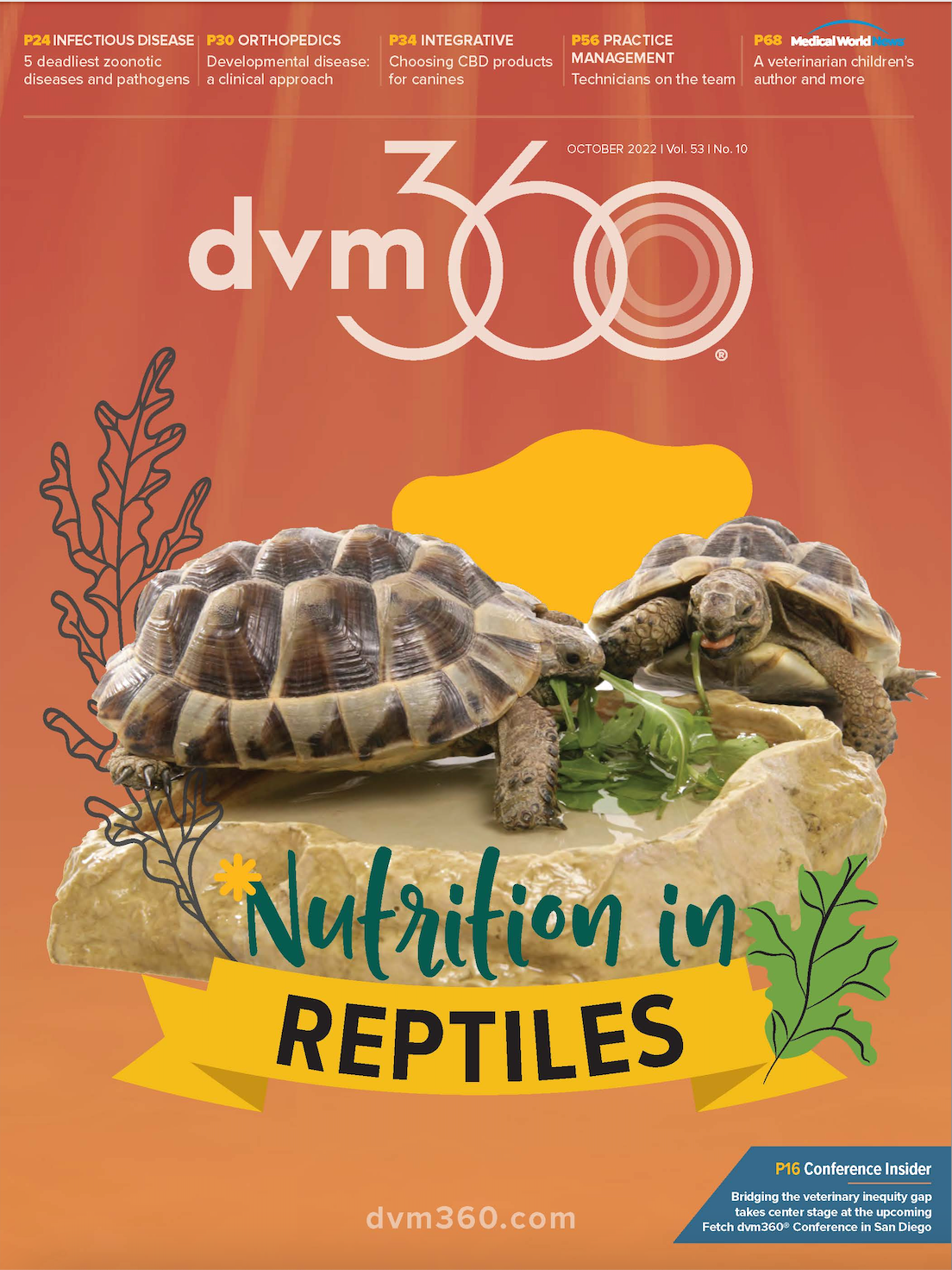Choosing CBD for canines
There are multiple factors to consider when selecting the right veterinary cannabis product for each patient
BillionPhotos.com / stock.adobe.com

Are you interested in using clinical cannabidiol (CBD) responsibly? If so, after you’ve taken a few entry-level courses in veterinary cannabis, you must find a product that is pure, potent, and consistent, which may not be easy.
As more research about veterinary cannabis is published, it becomes increasingly clear that the use of CBD and similar hemp-derived products in pets and veterinary patients is quite safe.1-3 Although only a few conditions have been examined in published studies (arthritis being the one most commonly improved by CBD), anecdotal reports show that CBD and analogous molecules from the cannabis plant can also be useful as adjuncts to conventional protocols for other complaints.
First, you should become acquainted with the cannabis policy of your state’s veterinary medical board, as they vary from state to state. The American Veterinary Medical Association (AVMA) has published guidelines for the use of CBD and other cannabinoids in animals, urging clinicians to follow accepted standards of care when prescribing CBD after conventional treatments have failed.4 AVMA also cautions against the use of CBD because the FDA hasn’t completed its quality and safety review of these products in humans or veterinary species.
Second, you should ask yourself these questions as you review a product for clinical use.
1. Does the manufacturer provide a certificate of analysis (COA) for it?
The COA tells you how potent and how clean a product is and what percentage of THC, CBD, and other cannabinoids it contains. Some COAs include a special analysis for terpenes. The COA also specifies whether there are mycotoxins, heavy metals, pesticides, and solvent residues in the product and whether it has been contaminated by microbes. Pesticides are commonly used to increase the yield of hemp plants, and the plants can absorb them. In addition, cannabinoids are usually extracted using strong hydro-carbon solvents. You need to know that the final product does not contain either solvents or residual pesticides. Make sure that the lot number on the bottle matches the lot number on the COA and check the amount of active ingredients on the COA against the label. The amounts should be the same, and ideally there should be more active ingredients like CBD measured than are listed on the label. This “overage” gives the product a longer shelf life and makes it more resistant to potency loss after exposure to excessive heat for an extended period.
2. Does it contain THC?
Hemp products are allowed to contain less than 0.3% Δ-9-tetrahydrocannabinol (THC). It is important to ascertain that the THC concentration is indeed below 0.3%, which is considered nonintoxicating. CBD with less than 0.3% THC is considered a full-spectrum product. Some dogs are very sensitive to THC and may react even to low levels of it. If you don’t want to take a chance with THC, look for the following:
- Broad-spectrum CBD contains only trace amounts of THC because the substance has been removed either through selective breeding or industrial chemical technology.
- Isolate CBD is pharmaceutically (99.7%) pure and contains no THC. Study results show that it is effective, but higher doses of CBD isolate are required than of full and broad spectrum CBD for it to be equally efficacious. Isolate is also associated with milder adverse events than broad-spectrum CBD.
3. Has the label been approved by the NASC?
In conjunction with the FDA’s Center for Veterinary Medicine, the National Animal Supplement Council (NASC) sets standards for animal CBD products, demanding that suppliers follow high quality assurance and control procedures and Current Good Manufacturing Practice standards, and that such compliance is verified by third parties. When a supplier passes its third-party audits, it can display the NASC seal on product labels. The presence of the seal tells you the product has met NASC standards and you can use it with confidence.
4. Is it labeled for animal use?
Veterinarians should use only products labeled for animal use, if available. The labels should contain warnings, precautionary statements, indication for specific species, species-specific or condition-specific administration guidance, and manufacturer contact information.
5. What does it taste like?
Some of the more highly concentrated hemp extracts, especially acidic cannabinoids like cannabidiolic acid (CBDA) and cannabigerolic acid (CBGA), are not very palatable, particularly to dogs and cats. Administration aids—pilling devices, soft and hard chews, pellets, capsules, flavored liquids, treats, and paste—may need to be employed for adequate adherence with these extracts.
6. Does it have a graduated dropper to facilitate accurate administration?
Ideally, CBD should be dosed by volume to body weight, with food and twice daily. A graduated dropper facilitates accurate measurements for more precise dosing. The tincture can easily be placed on food or on a hard biscuit. When given like this, with small amounts of food before their daily meals, absorption may increase as much as 5-fold.
7. Does it work?
If a study has been published, a company has invested a great deal of money in the research, and that can give you peace of mind. Go with the company that has so much confidence in its product’s effectiveness that it proves it in an unbiased study.
8. Does it contain the extract type, product format, and chemical fingerprint you would like?
It’s not your mother’s CBD anymore. Products can contain other cannabinoids in addition to CBD. Select them based on what you want them to address. For instance, those containing cannabinol (CBN) or cannabigerol (CBG) will be more calming than those with CBD alone, and those with acidic cannabinoids will have greater anti-inflammatory potential than those without it.
9. Is it competitively priced?
The CBD market is slowing down, so you may be able to negotiate a good price in return for loyalty. If you can’t price the product competitively, your clients may source their CBD from companies that have compromised quality to achieve lower costs/higher sales.
Starting dose
A good starting dose is 0.5 mg/kg CBD twice daily, given with a small amount of food just before meals. Administering the dose with food ensures that the patient receives it (ie, that it doesn’t go to other dogs in the house or to a small child sampling the dog bowl). Results of studies in dogs, horses, humans, rats, and other species have found that giving CBD with food increases blood levels at least 5 times. Soft chews and biscuits for dogs and pellets for horses and birds provide the food matrix as well as the CBD and offer better absorption and serum levels.
Pharmacokinetic studies suggest that it will take about 10 to 14 days for a dog’s serum to reach a steady state if given the same dose orally twice daily, with or without food. So in most cases, it will take that long or longer for the patient to respond to CBD at the starting dose.
Behavioral problems and anxiety often require lower starting doses and patients may respond more rapidly than those being treated for pain. Response time depends on the individual animal and its condition.
If your patient shows no improvement and you are still prescribing CBD after 14 days, double the dose. A higher dose may manage chronic pain better. Of course, some patients will not respond to CBD. If their condition is not related to the endocannabinoidome, it is unlikely to be helped by CBD.
The results of safety studies show that doses of 0.5 mg/ kg twice a day are quite safe. At 1 mg/kg or higher, 20% to 30% of dogs will have dose-dependent, transiently high serum alkaline phosphatase levels.
Because of its anti-inflammatory nature, CBD may help with hepatopathies, but in some cases it may cause problems that are impossible to anticipate. In patients with hepatic issues, liver values should be checked again after 2 weeks on CBD to ascertain that the substance is not contributing to the hepatopathy rather than helping it.
Caution should also be exercised when prescribing CBD to a patient with uncompensated or decompensated heart failure. CBD and THC will affect receptors in the myocardium and in the brain centers that regulate blood pressure and heart rate in the dog.
Robert J. Silver, DVM, MS, is chief veterinary officer of Real Mushrooms and a member of the dvm360® Editorial Advisory Board.
References
- Vaughn DM, Paulionis LJ, Kulpa JE. Randomized, placebo-controlled, 28-day safety and pharmacokinetics evaluation of repeated oral cannabidiol administration in healthy dogs. Am J Vet Res. 2021;82(5):405-416. doi:10.2460/ajvr.82.5.405
- Brutlag A, Hommerding H. Toxicology of marijuana, synthetic cannabinoids, and cannabidiol in dogs and cats. Vet Clin North Am Small Anim Pract. 2018;48(6):1087-1102. doi:10.1016/j.cvsm.2018.07.008
- McGrath S, Bartner LR, Rao S, Kogan LR, Hellyer PW. A report of adverse effects asso- ciated with the administration of cannabidiol in healthy dogs. J Am Hol Vet Med Assn. 2018;52:34-38.
- Cannabis use and pets. American Veterinary Medical Association. Accessed August 22, 2022. https://www.avma.org/resources-tools/animal-health-and-welfare/ cannabis-use-and-pets
